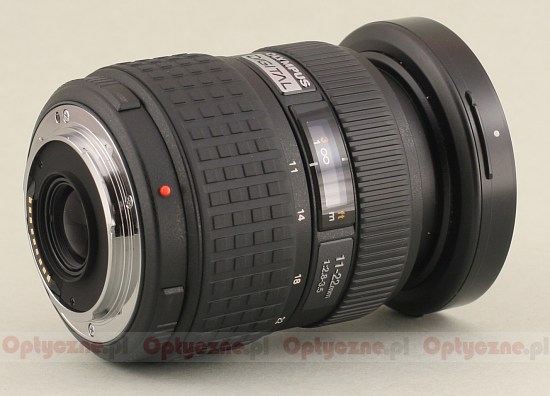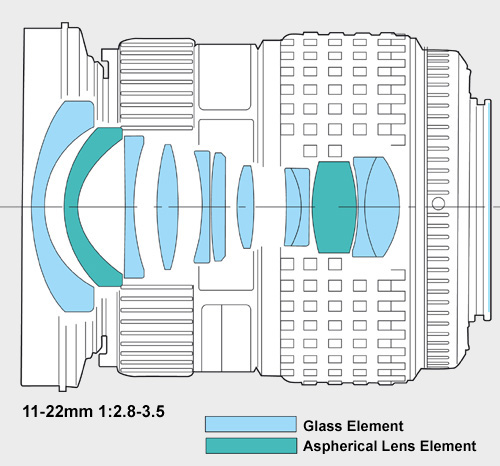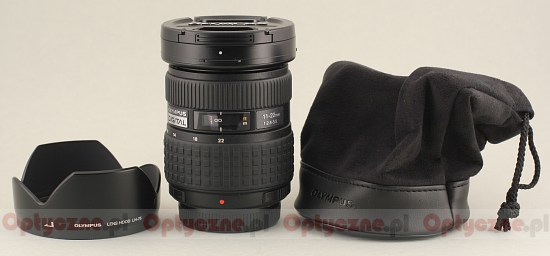Olympus Zuiko Digital 11-22 mm f/2.8-3.5
3. Build quality
Are there any ZD 11-22 lens’s rivals which can we used on APS-C/DX sensors? Once again you would look in vain for competitors with identical parameters. Similar performance can be obtained using such lenses as a Canon EF 16-35 mm f/2.8L II USM or a Sigma 15-30 mm f/3.5-4.5 EX DG Aspherical ( the comparison is presented here ), although you should remember that both these lenses are designed for the full frame, not APS-C/DX sensors.
 |
Please Support UsIf you enjoy our reviews and articles, and you want us to continue our work please, support our website by donating through PayPal. The funds are going to be used for paying our editorial team, renting servers, and equipping our testing studio; only that way we will be able to continue providing you interesting content for free. |
- - - - - - - - - - - - - - - - - - - - - - - - - - - - - - - - - - - - - - - - - - - - - - - -
Looking closely at the ZD 11-22 mm we see the first distinct difference between it and the ZD 14-54 mm. It’s undoubtedly a large, convex front element, which allows us to get the angle of view of 89 degrees by an aperture of f/2.8 - very good parameters as far as zoom lenses are concerned. It should be noticed that the front elements system extends during the focal length change and the lens is the biggest when zoomed to the short end.
Immediately after the mentioned front element you can find a manual focus ring which is comfortable, decent-sized, and it works properly. In the case of the Olympus system the change of the focusing mechanism mode is achieved through the camera menus so we won’t find any switch on the lens but it is worth knowing that the producer gives us many possibilities when it comes to the AF, MF mode or the mixture of both – we can correct the camera-cum-lens tandem settings manually and systematically.
Behind the ring there is a clear distance scale window marked in meters and feet. Below, we have a very big and comfortable zoom ring. It is well-damped and smooth but at 11-14 mm the resistance is a tad stronger than in the rest of the range. The weather-sealed barrel of the lens ends with a metal bayonet mount. On the other side we’ll find a non-rotating filter thread, 72 mm in diameter.

The lens’s inner construction consists of 12 elements in 10 groups. Two of them are aspherical. Inside we’ll also find an aperture with seven diaphragm blades which can be closed down to f/22.
The buyer gets both caps, a petal-type lens hood and a soft case included in box.
 |






